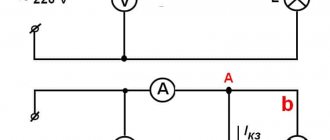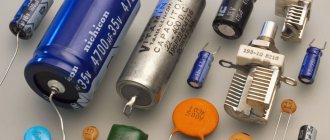We all know the concept of static electricity since school.
In this article, we intend to briefly characterize this phenomenon, having decided on a definition, describe the reasons for its occurrence and ways to prevent it in everyday life and at work.
Let's start with the reasons why this type of electricity appears and how to deal with it.
History of the study of the phenomenon
Oh, what spectacular and fascinating experiences these were! How delightfully the ladies screamed and turned pale when the learned demonstrators, filled with importance, extracted long bluish-violet sparks from the discharged gentlemen, when by simply raising their hands they ignited alcohol and handfuls of gunpowder, when several dozen gentlemen, holding hands, received a stunning blow, costing only two extreme touch a seemingly harmless glass jar...
All these amazing effects were caused by ridiculously simple means: a glass rod rubbed with dry fur, rotating glass balls and cylinders rubbing against the palms of a person isolated from the floor. The general enthusiasm for electricity from friction in the second half of the 18th century can only be compared with the enthusiasm caused a hundred years earlier by the discovery of atmospheric pressure.
According to the definition, static electricity as an effect is a dangerous phenomenon that threatens the health and practical activities of any person. To comprehend and understand its nature, we should remember that all known substances consist of molecules, and the latter are made of tiny particles called atoms. At their center is a nucleus with protons and neutrons, and groups of electrons rotate around it in different orbits. The total charge of these particles corresponds to the same indicator for protons, so the atom as a whole is neutral.
Even the most sober scientists succumbed to the general intoxication. Just as they once tried to reduce everything to the action of atmospheric pressure, so now they have managed to see the manifestation of electricity in the rotation of the planets around the Sun, and in the occurrence of earthquakes, and in the course of many diseases. It is no coincidence that the years 1750–1780 went down in the history of physics as the “period of electricity from friction.”
Atom image
The end of this period was marked by “the creation of a device that is similar in its actions to a Leyden jar... but which, however, operates continuously, that is, its charge is restored by itself after each discharge.” This is how in 1799 A. Volta described his electric battery - a great invention that dramatically changed the entire course of electrical research.
The voltaic column, which made it possible to obtain relatively large currents at low voltages, focused the attention of scientists on the magnetic, mechanical and thermal effects of electric current, which by the end of the 19th century already formed the basis of all electrical engineering. But it was only in the 20th century that interest in the once-abandoned “friction electricity” began to revive. And the reason for this revival was an important invention made at the turn of the century - the corona discharge...
"Corona" discharge
The industrial experience of the last century testified mainly to the negative effects of “electricity from friction.” Without knowing it, engineers built electrostatic generators of enormous size and, alas, quite high efficiency. We say “alas” because their effectiveness was confirmed by violent explosions in gunpowder factories, flour mills and sugar factories.
It turns out that it is impossible to transport sugar, flour or any dry powder in general through pipes or conveyors without them accumulating an electrical charge. Leather and rubberized belts on rotating pulleys are also electrified to a very high voltage. Paper, fabrics, rubber cords and tapes - and they are highly electrified during processing. And if there is fine flammable dust hanging in the air - say, flour or powdered sugar - then a spark that jumps from an electrified body can cause an explosion.
Material on the topic: how to determine current power.
The 20th century incredibly expanded the scope of harmful manifestations of electrostatic electricity. Countless plastics, artificial and synthetic fibers, varnishes and paints, oil, petroleum products and other electrifying liquids - this is not a complete list.
It will be interesting➡ What is resonance, what are its benefits and dangers
Airplanes are electrified during flight. Oil is electrified during pumping through pipelines, even steam is electrified during the process of evaporation and movement through pipes. Therefore, in our century, the attention of specialists was initially aimed mainly at reducing the efficiency of accidental electrostatic generators and getting rid of electrification and its unpleasant consequences. And in addition to moisturizing the materials being processed, methods of air ionization appear - radioactive isotopes and corona discharge.
If a voltage exceeding 30 thousand V is applied to two plates separated by a centimeter gap, a breakdown occurs - a spark jumps, the air ceases to be an insulator and becomes a conductor. What happens if you apply a negative voltage of 100 thousand V to a wire passing through the center of a grounded cylinder with a radius of 10 cm?
At first glance, nothing should happen: after all, for every centimeter of space separating the wire and the cylinder, there are not 30 thousand V required for a breakdown, but only 10 thousand.
This would be the case if we were talking about parallel plates creating a uniform electric field in the gap. A thin wire in a cylinder creates a non-uniform field; near the walls of the cylinder it is weaker, and in the area adjacent to the wire, a voltage of more than 30 thousand V may occur per 1 cm.
The electrons that escape from the surface of the wire are embedded in oxygen molecules and turn them into negatively charged ions, rushing to the walls of the cylinder under the influence of an electric field. At this moment, a greenish glow appears around the wire - a corona discharge. By making the air electrically conductive, such a discharge removes the charge from electrified substances.
This is what it was used for at first. But then it turned out that in such a phenomenon lay the key to the widespread industrial use of static electricity. In 1905, the English inventor F. Cottrell began passing gas contaminated with soot and ash particles through a pipe with a corona discharge. The ions produced in the discharge “stick” to the solid particles and impart a large negative charge to them, after which such particles are quickly thrown back by the electric field onto the walls of the grounded pipe, from which purified gas emerges as a result.
Static field generator
The corona discharge, which made it possible to impart charges to dielectric bodies many times greater than those that could be imparted to them due to friction, gave industrial significance to static electricity. Experiments that were formerly used for entertainment became the basis for important technical devices and processes. Installations have appeared for separating all kinds of bulk mixtures using electrostatics. It has become widely used in printing processes, paper and film processing.
In an electrostatic field, painting is carried out, abrasive particles, dry powders and even short fibers are applied to all kinds of substrates. The electrostatic field and corona discharge are the main participants in the xerographic process for fast text reproduction and non-contact printing methods. This is how “electricity from friction” enters industry and life, which was popular in the second half of the 18th century and which was little studied over the next 150 years. And this rapidly growing practical application of electrostatics is the secret of the increased interest in the electrostatic generators needed to drive all these important technological processes.
Basic parameters of static electricity discharge.
Reasons for appearance
It can occur on insulated conductors, on the surface or in the bulk of dielectrics. Friction that occurs when two substances of different kinds come into contact leads to electrification of dielectrics. This is due to various molecular and atomic forces. We can say that static electricity is produced when their equilibrium is disturbed due to the acquisition or loss of an electron.
It will be interesting➡ What is an electric field: an explanation in simple words
This process is very simple to explain. The state of equilibrium of an atom is achieved when there are equal numbers of protons and electrons. As electrons move from one atom to another, they form positive and negative ions.
When they are imbalanced, static electricity occurs. Protons and electrons have the same electrical charge, but with different polarities. It is measured in coulombs and determines the amount of electricity that passes in 1 second. in the cross section of the conductor. The static charge is directly proportional to the number of unstable ions, that is, the deficiency or excess of electrons.
Natural static voltage
Static electricity can be generated. This occurs due to the absence of one electron from the positive ion, as a result of which it can accept a free electron from the negative particle. In turn, a negative ion can be an atom or molecule with a large number of electrons. In these cases, there is one electron that is able to neutralize the positive charge.
The main causes of static electricity are:
- separation or contact of two materials;
- rapid temperature changes;
- UV radiation, radiation, strong electric fields;
- operations performed by cutting (cutting machines or paper cutting machines);
- induction, that is, the appearance of an electric field caused by a static charge.
A phenomenon called static electricity is found everywhere in everyday life. Electrostatic discharge occurs at very high voltages but at low currents. In this case, there is no danger to humans. Despite this, protection against static electricity is necessary, since it can be dangerous for many elements of electrical appliances. Transistors, microprocessors, circuits, etc. very often suffer from it.
Interesting read! What is a varistor and where is it used?
Definition of electricity
By the word “electricity” scientists mean the definition of the interaction of electric charges. Their movement is ordered so that people can use a variety of devices and mechanisms: from a kettle to a trolleybus. Static electricity is in no hurry to start up a refrigerator or mobile phone. It is in a state of relaxation. That is, the free charge remains until conditions for movement arise. It's pretty simple: imagine a firefighter waiting for a call about a house fire.
Protection measures
When working with electronic components, it is necessary to take measures to prevent the accumulation of static charge. Direct danger exists from lightning that occurs during the formation of thunderclouds. Clouds, due to the movement of air currents that are saturated with water vapor, can also form. Such discharges often occur between charged clouds and the ground. In this case, protection against static electricity in the form of lightning rods is needed.
Lungs resulting from various manifestations of static electricity are harmless at first glance, but this is far from the case. This phenomenon can conceal a great danger, since the resulting spark can cause a fire. Static electricity and protection against it are two concepts that should be known to everyone, since due to ignorance, serious troubles sometimes occur. In everyday life and at work, it is necessary to prevent the occurrence of this type of electricity. To do this, you should carry out this regularly. Flammable liquids are another serious threat. They must be used in well-ventilated areas, which partially prevents static electricity (and in this case you are almost guaranteed protection from it). When working with such liquids, use natural clothing, grounding of rotating mechanisms, and only metal containers for storing liquids that can quickly ignite.
Magic lamp effect
Security measures
At home, you can protect yourself from static by using the following measures:
- Humidify the air and ventilate the rooms every day;
- Regularly carry out wet cleaning to reduce the amount of dust and use special antistatic brushes;
Using a brush helps relieve accumulated tension.
- If possible, use furniture made from materials that remove static: special linoleum, wood;
- Do not pet animals in too dry air or comb them with wooden or metal brushes - the plastic is highly electrified;
- Use antistatic sprays for clothing, remove woolen items slowly to reduce friction;
- An anti-static strip should be placed on the underside of the vehicle to reduce the formation of static.
In production, electrostatic voltage can be reduced by reducing operating speed, using special materials and grounding. Also, according to GOST, the energy of charge accumulation on the surface of objects should not exceed 40% of the lowest ignition energy.
Precautionary measures must be taken in production
Static electricity is considered by many to be harmless, although not particularly pleasant. However, everything depends on the strength of the charge: in industry or when transporting large quantities of flammable liquids, the accumulated discharge can be very strong and lead to a fire.
You may be interested in this Features of the capacitor
Causes and manifestations
Static voltage occurs due to a violation of the overall balance of electrically charged particles present in any matter. It is formed not only according to a pre-planned scenario: at the request of the teacher or experimenter. In practice, it most often manifests itself without participation and against his will.
A simple example: putting on clothes made from synthetic fabrics. Due to friction with the body and the subsequent appearance of static charges, the material begins to fit tightly and does not allow the outfit to give the desired look. The only possible way out in this situation is to spray it with a special agent called an “antistatic agent.” This is the only way to remove excess charge from synthetic material.
Other typical causes of static charge formation are:
- noticeable temperature changes, which also occur very sharply;
- high level of radiation, leading to an increase in electron energy and the appearance of heterogeneously charged particles in the material;
- the presence of strong induction and magnetic fields.
It will be interesting➡ What is electrical resistance
The first two reasons why a person begins to receive an electric shock do not require any special explanation. In contrast, magnetic induction appears to be a serious problem, especially in recent times.
Lightning strikes the tower
With the constant increase in the number of household appliances, many of which have inductive elements, the influence of electromagnetic fields on humans is increasing sharply. One of these manifestations is the electrification of the atmosphere due to the separation of air particles into charged electrons and ions, which is essentially the same manifestation of static electricity.
The gradual accumulation of risk factors associated with a variety of sources of extraneous fields has led to a separate direction in science that studies the degree of their danger. On the other hand, scientists have long thought about the beneficial properties of electrification and the possibility of using this effect to serve humans.
Static electricity
Pros and cons of static manifestation
Dangerous manifestations of electrostatics primarily include the constant friction of poor-quality clothing on the human body and the accumulation of electrical charges on the skin. In the technical field, this effect is especially acute when working as specialist installers in soldering microcircuits. In this case, it threatens the failure of expensive chips or even entire devices assembled on their basis. When assembling valuable and rare microchips, safety requirements provide for special measures to protect against these unpleasant manifestations.
In technologies associated with the soldering of some microcircuits, electrostatic protection involves wearing a grounded bracelet on the hand, in the presence of which the danger is eliminated by the flow of charges to the ground. Such preventive measures mainly concern outdated K-MOS structures, which are increasingly being replaced by modern microchips that have built-in protection against static electricity.
Danger to humans
Manifestations of statics as such that are dangerous to humans include:
- thunderstorm discharges accompanied by lightning - they are caused by prolonged friction of air flows; in terms of possible consequences, including fire danger, they far exceed all other manifestations;
- the impact of charges on the biological surface (skin) and the appearance of severe irritation on it;
- dangerous and unpleasant discharges of electricity through the human body when touching metal parts of ungrounded equipment.
The latter phenomenon has nothing to do with critical electric shocks caused by emergency situations when dangerous voltage enters the body of a household appliance. All these questions relate only to the external side of the manifestations of static electricity, which can be eliminated with the help of technical means of protection. A closer study of this process reveals that the impact of statics on somatics and the human body can lead to more serious consequences:
- systematic sleep disorders;
- changes in the tone of the cardiovascular system;
- severe fatigue;
- the occurrence of problems with the nervous system;
- slight deviations in the functioning of muscle tissue.
Although these disorders are not very noticeable at first, over time changes accumulate in the body that can lead to serious abnormalities. The consequence of poor sleep is mental problems, which in turn leads to other diseases. The harm from this effect in this case is beyond doubt.
The effect of static current on humans
How to get
It’s easy to get static electricity at home:
- It is necessary to put on dry, clean wool socks (it is advisable to preheat them on a radiator) and walk on a nylon carpet without lifting your feet. You shouldn’t shuffle too much, as the discharge will happen faster than necessary. To receive a charge, you must touch a metal object or person;
Important! When checking, you should not touch the electronics, as the charge can damage the chips - statistically, this is the cause of almost 40% of breakdowns.
You might be interested in this: Features of the electrician profession
- You need to take a balloon (not made of foil) and inflate it. Then take a woolen object and rub the ball for 10 seconds. You can also place the ball on your head and rub it on your hair. To check, you need to bring the ball to an empty aluminum can lying on its side: if it starts to roll away, the charge has accumulated. To discharge, you need to rub the ball on the metal for a few seconds;
- To demonstrate and check the charge more clearly, you can make a special electroscope. You will need to take a glass made of foam polystyrene, make 2 holes in the bottom and thread a tube through them so that both ends are outside. You need to attach 4 small clay balls to the top edge with tape at an equal distance from each other, turn the glass over and place it upside down in the center of an aluminum baking sheet. Next, you need to take a piece of aluminum and roll a ball out of it, cut the thread (its length should be 2-3 times greater than the height from the edge of the straw to the baking sheet) and tie the ball to it. The second end must be tied to both ends of the tube, and the latter must be adjusted so that the aluminum ball hangs almost to the baking sheet, but does not touch it. If you bring a charged ball to the ball, the ball will be drawn towards it.
Another way is to rub the inflated balloon on your hair.











